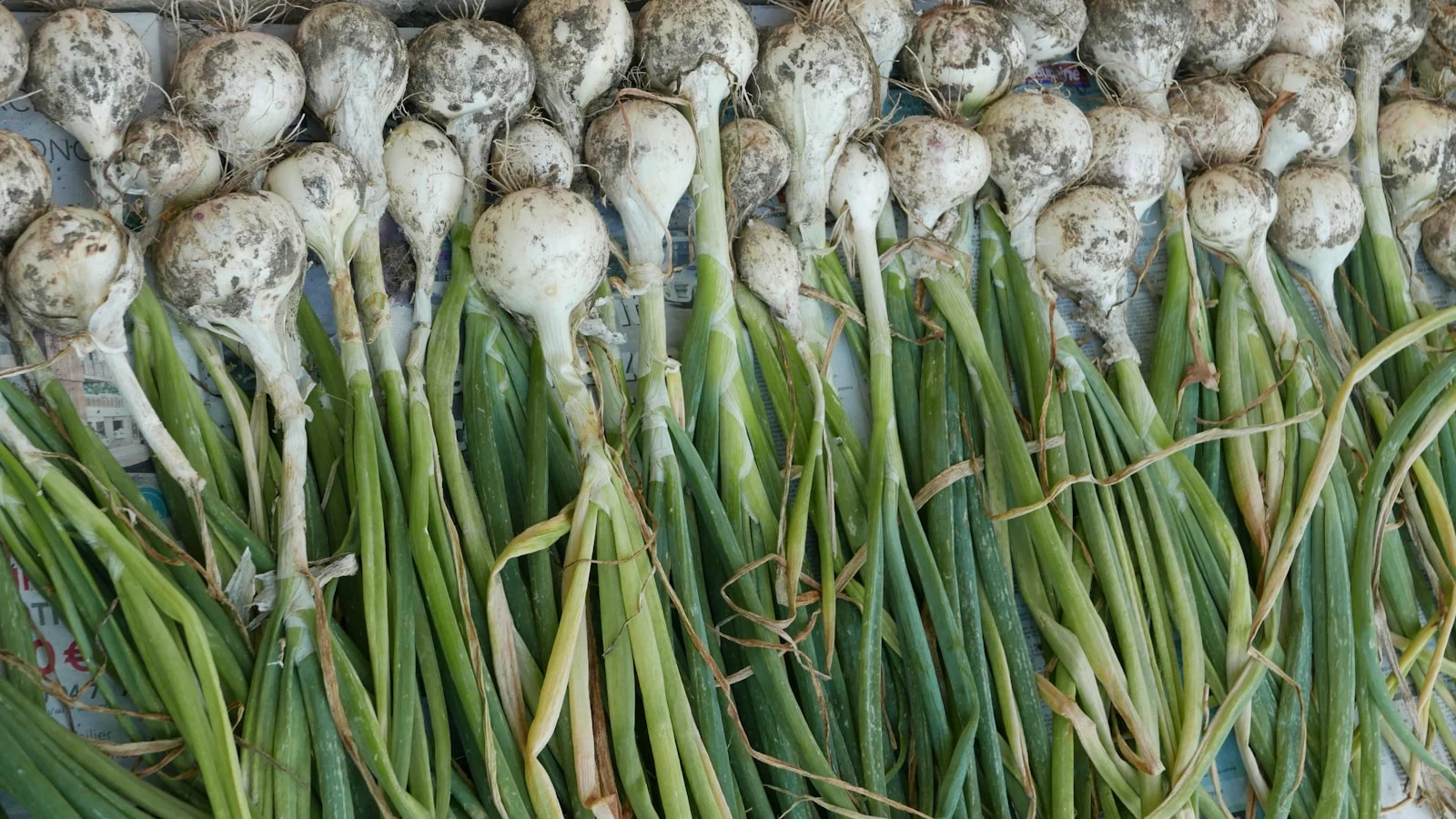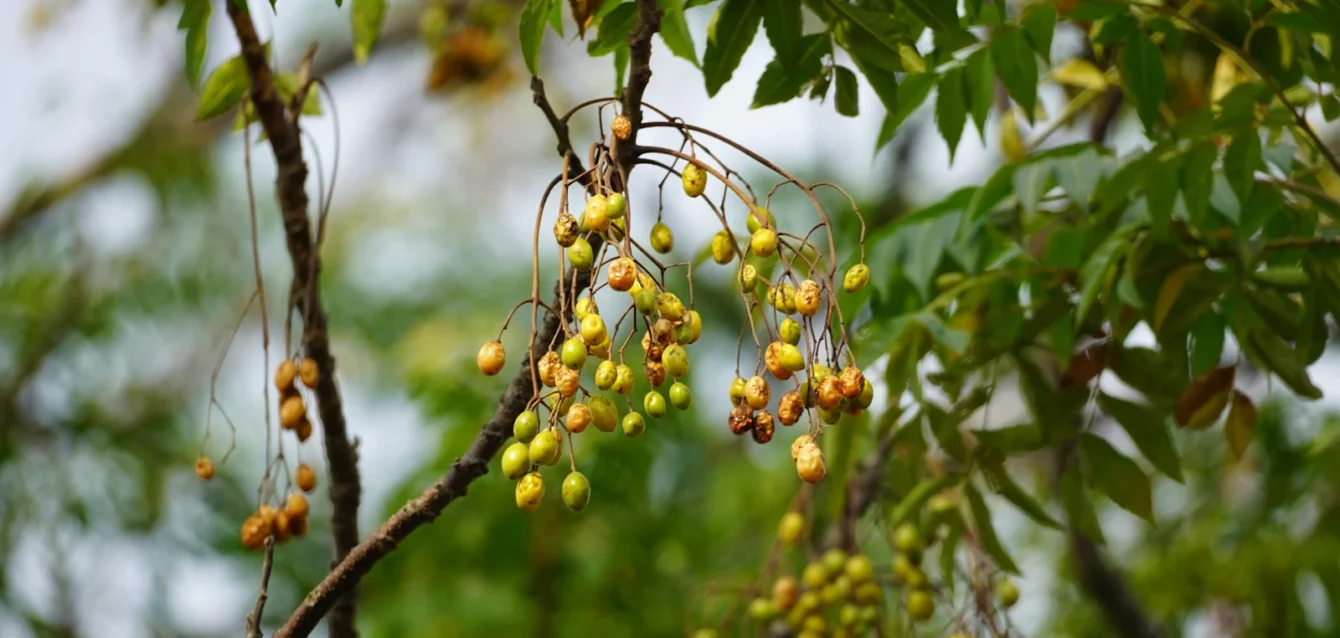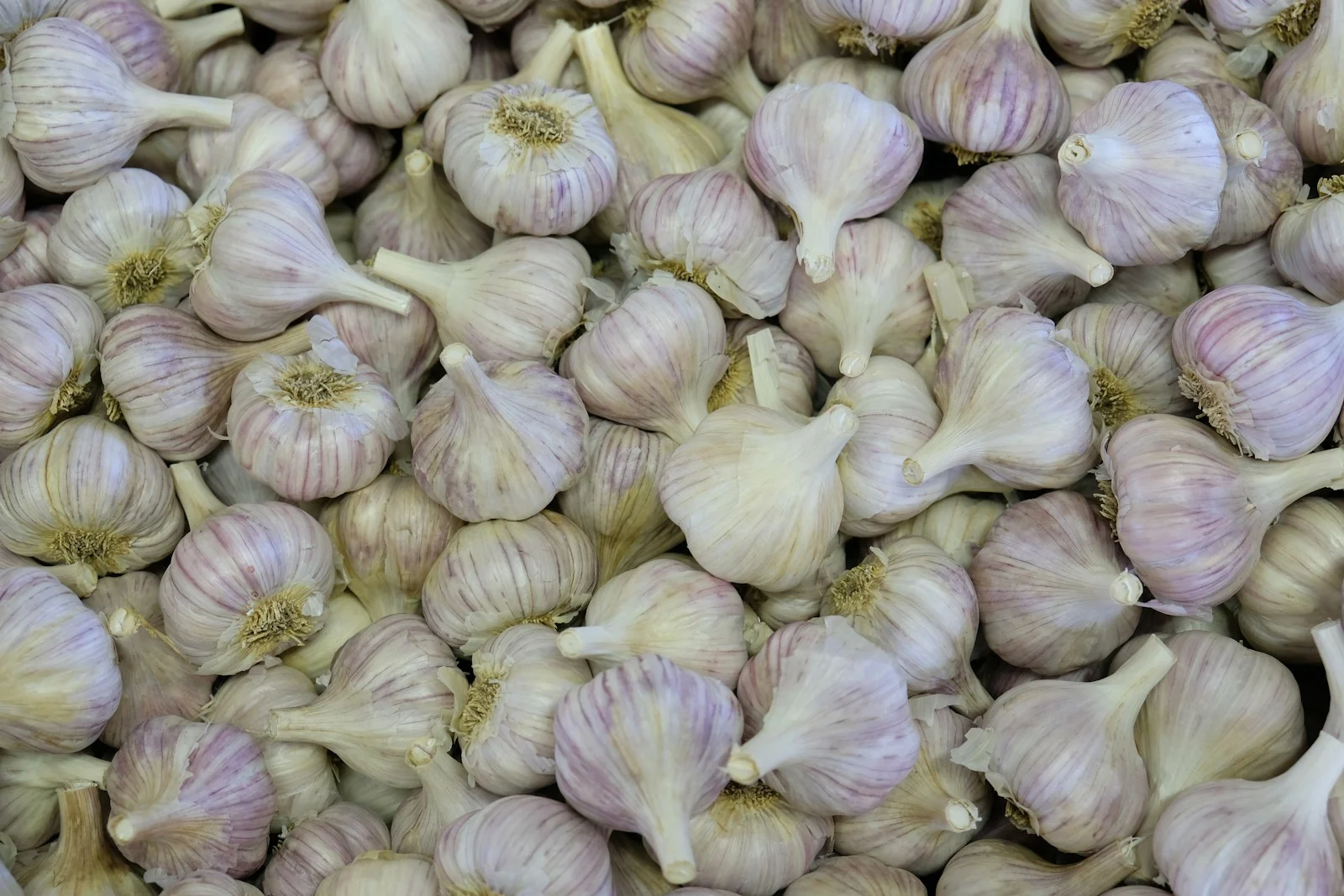This article is a sample portfolio piece created for presentation purposes. It serves exclusively to demonstrate style, structure, and editorial capabilities and may not represent a final, fully optimized, or updated version. If you are interested in professionally crafted articles, localization, or optimized content for your media or brand, contact us through the form or create an order, and we will be happy to prepare a custom solution for you.
Each of our articles is created through a combination of editorial experience, professional knowledge, and modern technologies. At the outset, we clearly define the brief – the topic, target audience, tone of communication, SEO keywords, and required length. We then conduct research using retrieval-based augmented generation (RAG) and verified sources, with AI helping us accelerate data collection, though we manually verify its accuracy. In the next step, we create a logical text structure, strategically place keywords, and adapt the language to the target audience. The finished content undergoes multi-stage linguistic, stylistic, and factual review, including SEO optimization and verification of E-E-A-T signals. When appropriate, we supplement the article with photographs, links, or graphics that enhance its attractiveness and comprehensibility. The final text combines AI assistance with human expertise and enables effective scaling while maintaining high quality.
Summary. Making your own organic pest spray from garlic and neem oil gives you a safe, two-pronged defense against over 200 garden pests without risking your family’s health or harming beneficial insects like bees. The recipe is straightforward – steep crushed garlic bulbs overnight, strain them, then mix with neem oil and liquid soap to create an emulsion that stays blended when you add water. Success depends on getting three things right: proper emulsification by mixing oil with soap before adding water, applying during cool morning or evening hours to prevent leaf burn, and having realistic expectations since organic sprays disrupt pest life cycles gradually over 2-3 weeks rather than killing instantly like chemical pesticides.
Home gardeners face constant battles with aphids, whiteflies, and spider mites destroying vegetables and flowers, but harsh chemical pesticides threaten family health and beneficial pollinators. Learning how to make organic pest spray from garlic and neem oil provides a safe, effective alternative that protects plants without toxic residues. Here’s the quick answer: combine one bulb of crushed garlic steeped in two cups of water overnight, strain it thoroughly, then mix with one teaspoon of neem oil, one teaspoon of liquid soap, and two additional cups of warm water for an effective organic pest spray targeting over 200 insect species. This complete guide covers the science-backed recipe, explains why this combination works better than single ingredients, provides step-by-step application instructions, reveals optimal timing considerations, and troubleshoots common mistakes that reduce effectiveness. You’ll discover how to protect your garden naturally while keeping your harvest safe for your family’s table.
Why Garlic and Neem Oil Work Together Against Garden Pests
Most DIY pest spray recipes list ingredients without explaining why they work, leaving you uncertain about effectiveness. Understanding the science behind this powerful combination builds confidence that you’re using a research-backed solution, not just folklore from the internet.
The Science Behind Neem Oil’s Pest-Fighting Properties
Neem oil contains azadirachtin, a compound that disrupts insect hormone systems and prevents molting and reproduction. This powerful ingredient acts as an antifeedant by disrupting sensory receptors, essentially making insects starve rather than eat your treated plants. Research demonstrates effectiveness against over 200 species including aphids, whiteflies, Japanese beetles, mealybugs, and spider mites. The best part? Neem oil shows low toxicity to mammals, birds, and beneficial insects like ladybugs and honeybees when used properly, making it safe for gardens where children and pets play.
How Garlic’s Sulfur Compounds Enhance Protection
Garlic brings its own pest-fighting arsenal to this combination. Allicin and sulfur compounds create a powerful repellent odor that confuses pest sensory systems, making your plants essentially invisible to hungry insects. Beyond repelling pests, garlic has contact insecticidal properties that eliminate pests on direct application. The benefits extend beyond insects – garlic’s antibacterial and antifungal effects help prevent powdery mildew and other diseases that commonly attack vegetables and ornamentals. Plants even absorb garlic compounds systemically through their roots and leaves, providing lasting protection that continues working after the spray dries.
The Synergistic Effect of Combining Both Ingredients
Here’s where the magic happens. Neem oil disrupts pest life cycles while garlic repels and kills on contact, creating a dual-action approach that pests cannot easily overcome. This combination prevents pest resistance development – a serious problem with both chemical and single-ingredient organic pesticides. Field studies show this combination consistently outperforms single-ingredient sprays in real-world garden conditions. Think of it this way: neem oil works slowly but thoroughly to dismantle insect reproduction, while garlic provides immediate repellent action and kills pests already on your plants.
Complete Recipe and Materials for How to Make Organic Pest Spray from Garlic and Neem Oil
Getting the right ingredients and tools makes the difference between a spray that works beautifully and one that disappoints. Quality matters significantly when you’re protecting plants you’ve nurtured for months.
Ingredients and Tools You’ll Need
Start by gathering these core ingredients:
- One bulb (10-12 cloves) of fresh garlic – not garlic powder or pre-minced
- Four cups of water (divided: two cups plus two cups)
- One teaspoon of cold-pressed neem oil (100% pure recommended, not pre-diluted formulas)
- One teaspoon of liquid castile soap or mild dish soap (this acts as the emulsifier that binds oil and water)
You’ll also need this simple equipment:
- Food processor or blender for crushing garlic
- Fine mesh strainer or several layers of cheesecloth
- Glass jar with lid for steeping
- Clean spray bottle with 1-2 quart capacity
- Measuring spoons for accuracy
- Funnel (optional but makes bottle filling much easier)
A quick tip on ingredient quality: cold-pressed neem oil contains higher concentrations of azadirachtin than clarified or hydrophobic neem oil, making it more effective against stubborn pests. Look for products labeled “100% pure cold-pressed neem oil” rather than ready-mixed sprays that may contain fillers.
Step-by-Step Mixing Instructions
This two-day process allows garlic to release its full pest-fighting potential. On Day 1, peel and crush your garlic cloves, then blend them with two cups of water until you have a cloudy, fragrant mixture. Pour this into your glass jar, cover it tightly, and let it steep at room temperature overnight for 12-24 hours – the longer steep time extracts more sulfur compounds. On Day 2, strain your garlic mixture through cheesecloth or a fine mesh strainer, pressing firmly to extract all the liquid while removing every bit of solid material that could clog your sprayer.
Now comes the crucial emulsification step that many gardeners skip, leading to poor results. In a small container, mix your neem oil with the liquid soap first, stirring thoroughly until they blend into a cloudy mixture. This pre-mixing creates an emulsion that allows oil and water to combine properly. Add this neem-soap mixture to your strained garlic water, then pour in the remaining two cups of warm water. Pour everything into your spray bottle using a funnel if needed, then shake vigorously for at least 30 seconds.
One reality check about storage: use your mixed spray within 24 hours for maximum effectiveness, though you can refrigerate it for up to 3-4 days if absolutely necessary. The active compounds begin degrading immediately after mixing, so fresh batches always work best. This means making only what you need for each application session rather than storing large quantities.
How to Apply Your Homemade Pest Spray Effectively
Knowing how to make organic pest spray from garlic and neem oil is only half the battle – application timing and technique determine whether you succeed or waste your effort.
Best Time of Day and Weather Conditions for Application
Most garden articles mention “spray morning or evening” without explaining why, leaving you guessing about consequences. Here’s what actually matters: apply your spray during early morning hours before 9 AM or late evening after 6 PM when temperatures stay below 75 degrees Fahrenheit. Temperature and sunlight intensity make or break your results in ways that surprise new organic gardeners.
Midday application causes leaf burn because oil magnifies sunlight like a lens, creating hot spots that scorch delicate tissue. You’ll see brown spots and wilting within hours if you ignore this timing rule. Evening application protects pollinators who are less active after sunset, allowing beneficial insects like bees to visit flowers safely the next morning. Cooler temperatures also improve absorption through leaf stomata – the tiny pores plants use for gas exchange – allowing more active ingredients to penetrate plant tissue.
Weather considerations matter just as much as time of day:
- Avoid spraying if rain is expected within 24 hours, as it washes away your treatment before it can work
- Never apply during windy conditions, which cause drift to unintended areas and leave uneven coverage
- Wait until morning dew has completely dried from leaves before application, or water droplets will dilute your spray
Proper Application Technique for Maximum Coverage
Shake your spray bottle continuously during application to prevent oil separation – this isn’t optional. Hold your sprayer 6-8 inches from plant surfaces for optimal droplet size and coverage. Here’s what many beginners miss: you must thoroughly coat both upper and lower leaf surfaces because pests like aphids and whiteflies hide on undersides where they’re protected from casual spraying. Take time to lift leaves and spray from multiple angles.
Apply spray to stems as well, especially targeting new growth where insects tend to congregate and cause the most damage. For prevention, spray every 7-10 days throughout the growing season. When facing active infestations, increase frequency to every 4-5 days until you see significant pest reduction. Always reapply immediately after heavy rain, even if you just sprayed the day before.
What Plants Benefit Most (and Which to Avoid)

This garlic-neem combination produces excellent results on vegetables like tomatoes, peppers, and cucurbits (squash, cucumbers, melons), along with herbs, roses, fruit trees, and most ornamental plants. However, use caution on plants with fuzzy or hairy leaves such as African violets, some succulents, and certain ferns, as they’re more prone to phytotoxicity from oil-based sprays. Always conduct a patch test by spraying a small area and waiting 24-48 hours before treating the entire plant. If you notice yellowing, browning, or wilting in the test area, this spray isn’t suitable for that particular species.
Common Mistakes That Reduce Spray Effectiveness (And How to Avoid Them)
Understanding where others fail saves you time, money, and potentially your favorite plants. These troubleshooting insights come from real gardener experiences, not theory.
Emulsification Errors That Cause Poor Mixing
The most common problem beginners face: oil stubbornly floats on the water surface instead of mixing, creating an unusable separated liquid. This happens when you skip the critical step of mixing neem oil with soap first before adding water. The solution is simple but non-negotiable: always combine your neem oil with liquid soap in a separate container before introducing any water, and use warm (not hot) water which emulsifies more readily than cold.
Why does proper emulsification matter so much? Poor mixing means uneven application where some plant areas get pure water while others receive concentrated oil spots that burn leaves. Use genuine liquid soap like castile soap rather than synthetic detergent – they’re not interchangeable. Alternative emulsifiers include soy lecithin or vegetable glycerin if you prefer options beyond soap, though liquid soap works reliably for most gardeners.
Over-Application and Concentration Problems
More is not better with organic pest sprays – a lesson many enthusiastic gardeners learn the hard way. Using spray too frequently or at concentrations higher than recommended causes phytotoxicity, damaging the very plants you’re trying to protect. Watch for these symptoms: leaf yellowing, brown spots appearing within 24-48 hours, wilting even when soil is moist, and blocked stomata that prevent photosynthesis. Follow dilution ratios precisely as written, and limit maximum application frequency to twice weekly even during severe infestations. Your plants need recovery time between treatments just like you need rest between workouts.
Timing and Storage Mistakes
Three storage and timing errors account for most spray failures. First, never apply to stressed, newly transplanted, or drought-affected plants, as their compromised defenses make them vulnerable to damage from any treatment. Second, check your neem oil’s storage conditions and expiration date – oil exposed to heat or direct light loses effectiveness rapidly, sometimes appearing identical to fresh oil. Third, avoid making large batches that sit unused in your garage or shed, because mixed spray degrades within 12-24 hours as active compounds break down. Small, fresh batches always outperform stored mixtures, even when refrigerated.
How Long Results Take and What to Expect
Setting realistic timeline expectations prevents premature frustration and keeps you committed to organic gardening methods that truly work.
Understanding the Gradual Action of Organic Sprays
Organic pest control operates fundamentally differently than chemical pesticides, and understanding this difference prevents disappointment. Initial response begins within 24-48 hours as azadirachtin takes effect, with insects stopping their feeding behavior even though they may still be visible on plants. Visible pest population reduction becomes noticeable after 7-14 days of consistent application following your schedule. Complete control of established infestations typically requires 2-3 weeks of regular treatments as you interrupt multiple generations of pest life cycles.
Unlike chemical pesticides that provide instant knockdown kills, organic sprays disrupt reproduction and development gradually over time. This slower action actually benefits your garden ecosystem by giving beneficial predatory insects time to establish themselves while target pests decline. Patience pays dividends when you’re building a naturally balanced garden environment.
Effectiveness Duration on Plants
Understanding how long your spray remains active helps you plan reapplication schedules realistically. The spray stays active on plant surfaces for 2-3 days under normal weather conditions. Effectiveness decreases by approximately 50% every 24-60 hours as compounds break down. Sunlight accelerates this degradation significantly, with active ingredients having a half-life ranging from just 45 minutes to four days depending on temperature, humidity, and sun exposure.
This short persistence requires regular reapplication throughout the growing season, but it also means you won’t have long-term chemical residues on vegetables you harvest for your family. The trade-off between persistence and safety tilts heavily toward safety with organic methods – exactly what conscientious homesteaders prefer.
Conclusion
Making your own organic pest spray from garlic and neem oil empowers you to protect your garden naturally while safeguarding family health, beneficial insects, and the environment. This simple yet science-backed approach gives you control over exactly what touches your food and flowers.
Here are your key takeaways for success:
- Start with quality ingredients – 100% cold-pressed neem oil and fresh garlic – and master proper emulsification by mixing oil with liquid soap before adding water
- Apply during cool morning or evening hours every 7-10 days for prevention, ensuring thorough coverage of leaf undersides where pests hide
- Be patient with gradual results – organic solutions work by disrupting pest life cycles rather than providing instant kills, but they protect beneficial insects
- Always conduct patch tests on sensitive plants and avoid application before rain or during extreme temperatures that increase damage risk
- Mix only what you need for immediate use since effectiveness diminishes within 24 hours of mixing
Begin your first batch today by steeping crushed garlic overnight, then tomorrow morning you’ll be ready to mix and apply this powerful natural defense that’s been protecting gardens for centuries while keeping your harvest safe for your table. Your plants, your family, and the beneficial insects visiting your garden will all thank you for choosing this natural approach over harsh chemicals.
Frequently Asked Questions About How to Make Organic Pest Spray from Garlic and Neem Oil
1. Is garlic and neem oil spray safe for bees and other beneficial insects?
Yes, this spray is safe for bees, ladybugs, and butterflies when applied correctly. Neem oil only affects insects that chew or suck on treated leaves, so pollinators that visit flowers aren’t harmed. Always spray in early morning or evening when pollinators are less active, and avoid spraying open flowers directly.
2. How long can I store the mixed spray before it loses effectiveness?
You should use your mixed spray within 24 hours for best results, though it can be refrigerated for up to 3-4 days if needed. The active compounds start breaking down immediately after mixing, so it’s better to make small fresh batches rather than storing large quantities. Think of it like fresh-squeezed juice – it works best when it’s just made.
3. Will this spray work on all my garden plants or are some too sensitive?
Most vegetables, herbs, roses, and fruit trees handle this spray beautifully. However, plants with fuzzy or hairy leaves like African violets, some succulents, and certain ferns can be sensitive to oil-based sprays. Always test a small area first and wait 24-48 hours to check for yellowing or wilting before treating the whole plant.
4. Why does my neem oil float on top instead of mixing with the water?
This happens when you skip the emulsification step that binds oil and water together. Always mix your neem oil with liquid soap first in a separate container before adding any water – this creates an emulsion that stays mixed. Use warm water and shake vigorously, and you’ll get a cloudy mixture that sprays evenly instead of separated layers.
5. How quickly will I see results after spraying my pest-infested plants?
Don’t expect instant knockdown like chemical pesticides – organic sprays work differently. Insects will stop feeding within 24-48 hours, but you’ll notice visible pest reduction after 7-14 days of consistent weekly applications. Complete control of heavy infestations typically takes 2-3 weeks because you’re disrupting multiple generations of pest life cycles rather than just killing what’s visible today.
6. Can I add other ingredients like hot pepper or essential oils to make it stronger?
While you can experiment with additions, the garlic-neem combination already provides dual-action pest control that’s been proven effective in field studies. Adding too many ingredients can actually increase the risk of plant damage or create unpredictable reactions. If you’re dealing with stubborn pests, it’s better to increase your application frequency to every 4-5 days rather than making the spray stronger.
External sources used
-
Backyard Garden Geek. “How Long Does Neem Oil Last? A Complete Shelf Life Guide.” 2024. Available at: https://backyardgardengeek.com/how-long-does-neem-oil-last/
-
Coghill Farm. “My Guide to Organic Pest Control in Your Garden.” 2023. Available at: https://www.coghillfarm.com/my-guide-to-organic-pest-control-in-your-garden
-
Entomologist Blog. “How Does Azadirachtin Kill Insects.” 2025. Available at: https://blog.entomologist.net/how-do-insects-get-killed-by-azadirachtin.html
-
Epic Gardening. “How to Make Garlic Spray to Tackle Pests and Diseases.” 2024. Available at: https://www.epicgardening.com/how-to-make-garlic-spray/
-
Farmstand App. “7 Best Neem Oil Emulsifiers for Better Spray Coverage.” 2025. Available at: https://www.farmstandapp.com/117559/7-best-neem-oil-emulsifiers-for-better-spray-coverage/
-
Gardening Know How. “DIY Garlic Spray For Plants To Keep Your Garden Pest-Free.” 2025. Available at: https://www.gardeningknowhow.com/edible/herbs/garlic/controlling-pests-with-garlic.htm
-
Gardening Know How. “Helping Your Plants With A Neem Oil Foliar Spray.” 2023. Available at: https://www.gardeningknowhow.com/plant-problems/pests/pesticides/neem-oil-uses.htm
-
Grow Your Own Feast. “5 DIY Neem Oil Sprays: Natural Vegetable Garden Pest Control Recipes.” 2025. Available at: https://www.growyourownfeast.com/pest-control/5-neem-oil-recipes-for-vegetable-garden-pest-management/
-
Homestead and Chill. “How to Properly Emulsify Neem Oil & Make a Safe Garden Spray.” 2022. Available at: https://homesteadandchill.com/emulsify-neem-oil-spray/
-
National Pesticide Information Center (NPIC). “Neem Oil Fact Sheet.” Oregon State University, 1995. Available at: https://npic.orst.edu/factsheets/neemgen.html
-
Our House Plants. “How to use Neem Oil on your Houseplants.” 2012. Available at: https://www.ourhouseplants.com/guides/neem-oil-houseplants
-
Piwakawaka Valley. “Neem Oil and Garlic Organic Spray Recipe | Natural Bug Control.” 2021. Available at: https://piwakawakavalley.co.nz/neem-oil-and-garlic-organic-spray-recipe-natural-bug-control/
-
Plant America. “How Long Does Neem Oil Last: Breaking the Myths With Facts.” 2025. Available at: https://plantamerica.com/how-long-does-neem-oil-last/
-
Scribd Research Database. “Effectiveness of Neem and Garlic Extracts in Pest Management.” 2025. Available at: https://www.scribd.com/document/788639095/PDF-Effectiveness-of-Neem-and-Garlic-Extracts-i
-
This Old House. “How to Use Garlic as Pest Control.” 2024. Available at: https://www.thisoldhouse.com/pest-control/118034/using-garlic-as-pest-control



